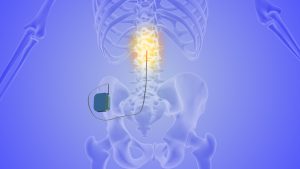The project at a glance
-
Start date:01 Jan 2019
-
Duration in months:72
-
Funding:Nevro Corp.
-
Principal Investigator(s):Marian VAN DER MEULEN
About
Electrical spinal cord stimulation (SCS) for the treatment of chronic pain has been used for decades. A recently introduced novel SCS protocol uses very high pulse frequencies and has been shown to be more effective than traditional SCS. The mechanism of action of this form of high frequency therapy (HF10) is still poorly understood. It is likely to involve spinal modulation as well as cerebral influences. In this study we address the mechanism of action of HF10 by establishing sensory profiles of patients. No previous studies have used quantitative sensory testing (QST) to prospectively investigate patients undergoing HF10 therapy. We study the functioning of somatosensory nerve fibres and of dynamic processes related to spinal cord plasticity and to activation of descending pain control pathways. Patients with chronic back and leg pain, as well as age-matched control subjects take part in the study. They undergo a QST battery at fixed time intervals (pre-treatment, during trial period, and at 1, 3, 6 and 12 months follow-up), and fill out questionnaires related to their pain experience and personality factors.
Image at the top: © generated by AI (copilot)
Organisation and Partners
- Department of Behavioural and Cognitive Sciences
- Faculty of Humanities, Education and Social Sciences (FHSE)
- Health and Behaviour
- Centre Hospitalier de Luxembourg (CHL)
Project team
-
Marian VAN DER MEULEN
-
Fernand ANTON
-
Frank HERTEL
Centre Hospitalier de Luxembourg (CHL)
Keywords
- Chronic pain
- Spinal Cord Stimulation
- Quantitative Sensory Testing
